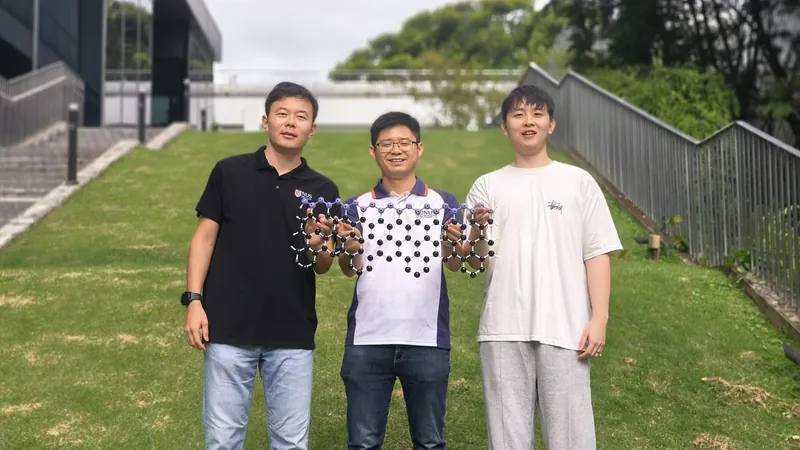
Groundbreaking Graphene Ribbons Set to Revolutionize Quantum Technologies!
2025-01-09
Author: Ming
Innovative researchers at the National University of Singapore (NUS) have made major strides in the field of quantum materials with their development of a game-changing carbon-based material known as the Janus graphene nanoribbon (JGNR). This cutting-edge advancement has the potential to reshape the landscape of quantum electronics and computing, marking a monumental step toward realizing the quantum future.
Novel Design of JGNR
At the heart of this breakthrough is the novel design of JGNR, characterized by its unusual zigzag edges and an exclusive ferromagnetic edge state on one side. This configuration facilitates the creation of a one-dimensional ferromagnetic spin chain, which could pave the way for unprecedented applications in spintronic devices and the next generation of multi-qubit systems—essential components for quantum computing.
Collaborative Research Efforts
The research team, under the leadership of Associate Professor Lu Jiong from the NUS Department of Chemistry, joined forces with esteemed international collaborators to achieve these remarkable results. Their effort showcases a unique synthesis of expertise spanning synthetic chemistry, materials science, and theoretical physics.
Properties of Graphene Nanoribbons
Graphene nanoribbons, formed from thin strips of nanoscale honeycomb carbon, are noted for their extraordinary magnetic properties which arise from unpaired electrons in the atoms' π-orbitals. By precisely engineering the edges into a zigzag structure, researchers can create a spin-polarized channel, unlocking immense possibilities for applications in cutting-edge spintronic devices.
Meaning Behind the Name 'Janus'
The term "Janus" originates from antiquity, referencing the Roman god symbolizing duality and transitions. In materials science, it describes substances with contrasting properties on different sides. The JGNR exemplifies this perfectly, sporting a configuration where only one edge exhibits the zigzag pattern, making it the world’s first one-dimensional ferromagnetic carbon chain. This innovative structure is achieved using a Z-shaped precursor that introduces a sequential array of hexagon carbon rings along one of the edges, thereby disrupting both structural and spin symmetry.
Implications for Quantum Technologies
Assoc. Prof. Lu remarked, “Magnetic graphene nanoribbons—composed of fused benzene rings—hold immense promise for quantum technologies due to their lengthy spin coherence times and capability to function at room temperature. The challenge of engineering a one-dimensional single zigzag edge is crucial for assembling multiple spin qubits, essential for advancing quantum applications.”
Future Prospects
The success of this research is not merely an academic triumph; it holds profound implications for the future of technology. As quantum computing continues to emerge, the integration of these innovative materials could facilitate advancements in processing capabilities, leading us closer to powerful quantum machines. With support from notable figures like Professor Steven G. Louie of UC Berkeley and Professor Hiroshi Sakaguchi from Kyoto University, this remarkable collaboration is setting the stage for a new chapter in quantum technology, promising vast potential for breakthroughs that could change how we understand and use computing in the years to come.
Stay tuned—this revolutionary development could redefine our approach to technology, blending the realms of science and imagination like never before!




 Brasil (PT)
Brasil (PT)
 Canada (EN)
Canada (EN)
 Chile (ES)
Chile (ES)
 Česko (CS)
Česko (CS)
 대한민국 (KO)
대한민국 (KO)
 España (ES)
España (ES)
 France (FR)
France (FR)
 Hong Kong (EN)
Hong Kong (EN)
 Italia (IT)
Italia (IT)
 日本 (JA)
日本 (JA)
 Magyarország (HU)
Magyarország (HU)
 Norge (NO)
Norge (NO)
 Polska (PL)
Polska (PL)
 Schweiz (DE)
Schweiz (DE)
 Singapore (EN)
Singapore (EN)
 Sverige (SV)
Sverige (SV)
 Suomi (FI)
Suomi (FI)
 Türkiye (TR)
Türkiye (TR)
 الإمارات العربية المتحدة (AR)
الإمارات العربية المتحدة (AR)